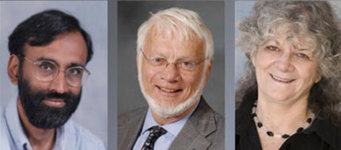"Associated with the Max Planck Society for more than 20 years"
President Peter Gruss congratulates the former senior research scientist Ada E. Yonath on winning the 2009 Nobel Prize for Chemistry
The Max Planck Society congratulates Ada E. Yonath on winning the 2009 Nobel Prize for Chemistry. "I am delighted that Ms. Yonath’s award honors a scientist who was associated with the Max Planck Society for more than 20 years. It was during this time that the decisive basis was laid for the research for which she has now been awarded the Nobel Prize," says President Peter Gruss.

Ada E. Yonath worked in Heinz-Günter Wittmann’s Ribosomes and Protein Biosynthesis Department at the Max Planck Institute for Molecular Genetics in Berlin from 1979 through 1984, at which time she began to study the structure and function of ribosomes. From 1986 through 2004 she was head of the Max Planck Working Group on Ribosome Structure at the German Electron Synchrotron (DESY) in Hamburg. Currently, Ada Yonath is a structural biologist conducting research at the Weizmann Institute of Science in Rehovot, Israel. She shares the Nobel Prize with Venkatraman Ramakrishnan (MRC Laboratory of Molecular Biology, Cambridge, UK) and Thomas A. Steitz (Yale University, USA).
Ribosomes, the focus of Ada E. Yonath’s research, are the cells’ protein factories. They are where indispensable proteins are produced in line with a specific plan. Ribosomes were first described in 1953 by the American George Emil Palade. However, at that time, there was no way of examining these extremely complex cell organelles in detail. More than 20 years ago, Ada E. Yonath began to turn her attention to the topic. Her plan was to decode the structure and function of ribosomes with the help of crystallographic techniques. She was a pioneer in this field and had to first develop the appropriate methods.
The breakthrough in ribosome research came in 1995: While images of ribosomes were already available, Ada E. Yonath was the first to make the data and images truly readable and, therefore, useful. She managed this by inserting "signposts" into the ribosomes - by marking certain points in the ribosomal subunit with iridium or mercury compounds. In doing so, she opened the door to the study of these cellular protein factories.
